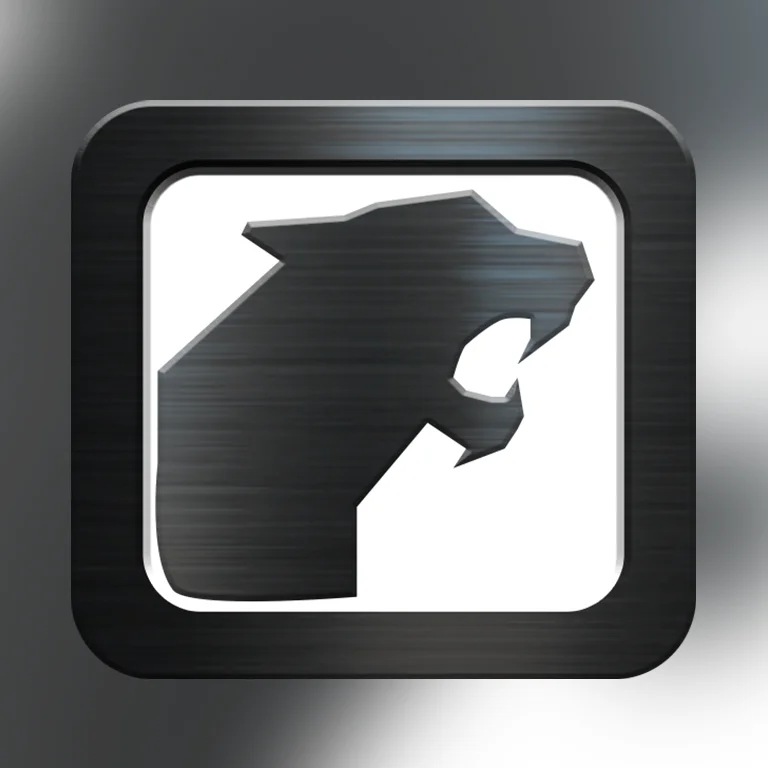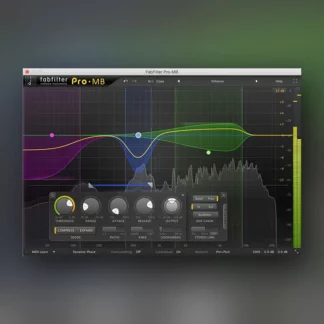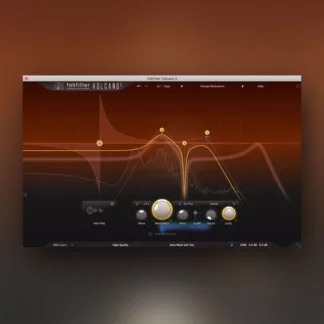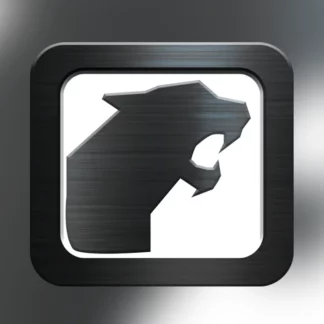If you’d rather spend your time doing things other than splitting stereo tracks into mono for more focused processing, or be able to individually address left/right components of a group channel, Panther enables you to process stereo tracks as you would mono. Rather than having to manually split a stereo channel into two mono channels, Panther provides individual access to left and right sides of a stereo channel with EQ, gain, pan, and delay control. It also features an M-S mode that lets you apply these same processes individually to mid and side channels, which in turn enables you to not only problem solve, but apply some creative touches as well.
Panther Stereo Manipulator—Just the Facts:
- Independent control over stereo sources
- Independent EQ
- Independent micro-delay
- Full Panning tools
- Mid/Side or Stereo Mode
Panther Stereo Manipulator—Cracking the Code
Bi-sectional
While Panther may look a little complicated at first glance, it’s actually quite straightforward, and provides all the necessary controls and displays for precision work with EQ, delay, panning, and level control. Divided into two sections, each “side” of Panther Stereo Manipulator has 3-band (high, mid, low) parametric EQ with selectable high- and low-pass shelving filters. Each band has a numeric readout and can be individually activated or deactivated.
Between the equalizer controls are buttons for left and right solo, phase, and M/S processing, pan, delay, and gain controls with readouts that can be operated independently or ganged. Of special note, the on-off buttons that link the virtual knobs for pan, delay, and gain freeze whatever position the left/right knobs are in. For example, if balancing L/R gain resulted in one side set 1.5dB higher, switching into link mode will maintain that relationship so you can then adjust for overall volume. For less mouse and more precision, all numeric displays can be double-clicked to type in values. Beneath these controls is a dual waveform display, as well as input and output level meters, plus a trim control slider from -36 to +36dB on the right of Panther.
Bi-Polarity
In recording stereo tracks, there can be issues that your average plug-in or DAW’s embedded channel tools can’t cope with. For example, there’s the issue of phase. If drum overheads are tracked in stereo but the distance from the mics to the snare wasn’t properly measured, phase or timing problems can occur between the channels. While Panther does have individual phase reverse buttons, flipping the phase of one side of a stereo channel can cause far more problems than it solves, since not all phase discrepancies are 180 degrees. Often, there’s comb filtering from sounds hitting the mics at different times, also known as “in-between phase.” Panther has independent delays to time-align left and right channels of a single stereo track or 2-track mix. Between incremental left/right delays and phase reverse buttons you can handle any phase or comb-filtering problems.
Bi-Curative
A lot of people go both ways on the use of stereo tracks, since they can be difficult to deal with (assuming you don’t have Panther). On the plus side, they can make it much easier to mix high track-count projects by bouncing multi-miked instruments to stereo. As mixer extraordinaire CLA (Chris Lord-Alge) puts it, “I don’t want to be wandering through the parking lot wondering where the car is,” which is why he has an assistant sub-mix layers of doubled instruments, such as clean, crunch, and heavy distorted guitars; string ensembles; and Roy Thomas Baker-style background vocals into a single stereo tracks to simplify the mixing process.
The downside is that if you don’t guess right, you or your assistant have to go back and remix those 48 tracks of rhythm guitars, unless, of course, you do have Panther. Panther’s individual phase reverse buttons could come in handy for multiple hard-panned mono tracks bounced to stereo. However, dealing with phase is just one potential scenario.
Since instrument and vocal waveforms are complex, they will combine to either reinforce or cancel unpredictably, leading to volume or tonal discrepancies. Perhaps you’d like to remove some honk from the right channel while boosting thump, and simultaneously, trim the wool and flatten the fizz in the left channel. Maybe you’d like to widen the guitars ever so slightly, or even dramatically, which is where the independent delay comes in handy.
Let’s say you’ve adjusted the delay on one side of stereo background vocals, but want to create a “back wall” for the choral group. Just lock the delay knobs together and increase or decrease delay (move vocals forward or backward) while maintaining the adjusted delay relationship you initially had.
Panther lets you perform surgery on the tracks you have without having to chase your tail and start over. Better still, you don’t need an MBA to do it (not the business degree, MBA is technical studio jargon for Monkey Boy Assistant).
Bi-O’rhythms
Panther is also a multi-purpose creative solution for drum overheads, whether taken from a loop, drum machine, or recorded to a stereo track. An old trick used on recorded overheads is to EQ each side of the stereo track differently. After all, you have a snare, hi-hat, and small tom on the left side of the kit, floor tom and large ride and crash on the other side. It stands to reason that you wouldn’t EQ a hi-hat the same way you would a 20″ ride, or a rack tom the same as a floor tom. Plus, the differences in EQ also enhance the stereo image by emphasizing different harmonics, which creates a greater sense of width, without tempting the “phates” (phase problems).
Panther is also capable of creating space for instruments recorded in A/B stereo, such as an acoustic guitar, without sending to reverb or delays. Switch Panther to mid-side (M-S) processing and add a delay to the sides—voila, instant room mic—and you can adjust the delay incrementally to optimize against phase cancellation. If you do wander into phase cancellation territory, your free copy of BDL’s Panipulator will let you test for mono compatibility.
Panther was designed to eliminate all the downsides of working with stereo tracks.






